|
I recently bought a sandbag for my home yoga practice, and to use with one-on-one students. Sandbags are often used to add weight to a pose, or to give external pressure to our bodies as a way of cueing and /or to provide our bodies with feedback. Recently, I brought the sandbag back into my yoga practice. I was craving it’s weight; it makes me feel more grounded and solid. A yoga sandbag is literally a 10lb sandbag – dressed up in cute fabric: Often in yoga poses, we talk to our bodies in a way that makes them feel the ground with more awareness. Sensing our limbs pressing into the ground, and the rebound effect of elongation, length and strength we get from this. We pay attention to how we stand, sit, or lay, so we can feel rooted or connected to our physical body, and beyond that, to the earth. It’s this connection that allows us to stand taller and more firmly – literally and metaphorically. Standing “in our truth” is the essence of “grounding” ourselves. This is where a sandbag can be helpful – it’s added weight gives the body more of a sense of sinking into itself. It helps us be more rooted and grounded. In some poses, adding a sandbag is like having a teachers hands guiding you to move deeper. It can help to teach what feeling physically grounded feels like. Maybe my craving for a yoga sandbag comes from my obsession with magic bags. I love magic bags. Partly for the warmth, and partly for the weight. Granted, it’s not 10lbs, but it’s enough to feel a little more secure, and a little more comforted. I suppose the sandbag is like the Yoga Magic Bag! I found a great article from the Halfmoon Yoga Product blog, that has photos, descriptions and precautions for using a sandbag in a variety of postures. My personal favorite is legs up the wall with the sandbag on my feet. Have you tried a sandbag in your yoga practice? Share your thoughts.
Namaste, Sandy
1 Comment
Last week, I asked a question on my Yoga for Grief Support Facebook page, asking readers what yoga pose was the most soothing. The most common response was child’s pose. So, I thought I would write a post on everything-child’s-pose!  Child’s Pose Childs pose is also called balasana and/or adhomukha virasana. Start by kneeling on the floor. Bring your big toes together and widen the knees, so they are about as wide as your hips. Extend and lay your torso down between your thighs. The forehead comes to rest on the floor. You can reach the arms forward with your hands comfortably shoulder width apart (top figure to the left) or you can lay them along side your body with the palms facing up and your shoulders released towards the floor, widening the upper back (middle figure to the left).With the torso resting on the thighs, and your forehead supported on the floor, child’s pose is very restful. It calms the mind and soothes the eyes and reduces stress and fatigue. Child’s pose can help relieve headaches, dizziness, and breathlessness. It can also help with symptoms associated with menstruation. Child’s pose is also considered a forward bend, and gently stretches the ankles, thighs and hips. It also can relieve tension in the back and neck when it is done with the head supported. With the arms extended, child’s pose gently stretches the long muscles of the back, shoulders and arms. If you have limited motion in the knees (osteoarthritis, knee injury) or ankles, you may require a modification. For stiff knees you can place a bolster or large rolled blanket under the hips and on top of the lower legs and heels to decrease how much bend is required in the knees. For tight ankles that don’t flatten against the floor, a smaller rolled blanket or towel can be placed under the ankles to offer support. Also, blocks, pillows, or a blanket can be used to support the head if it doesn’t easily rest on the mat. Some other variations that can be quite soothing and supportive are pictured below: In the first photo, the body is supported by a stack of bolsters or blankets. Build the stack high enough that you can comfortably rest on the bolsters and relax your legs, hips and shoulders. You can turn your head to the left or the right, just be sure to change the position to the other side to balance the stretch in the neck. This modification would be helpful if you have tight hips, as it decreases the amount of bend, by raising the height of your torso. You could also set up your bolster with a lift (as pictured below) so you can wrap your arms around the bolster, which you might find comforting. Also, a blanket or sandbag on the pelvis can provide a gentle way to relax and deepen into the pose. Another variation that does not require much equipment is the chair variation…..which can be a great way to relieve stress and tension from the back of the body. Let your head, arms and torso drape over your thighs. This modification would be appropriate for people who find child’s pose uncomfortable on the knees, shins and ankles. Breathing and Calming the Mind
Child’s pose is an excellent pose to feel the breath, as you can feel the movement of the chest and abdomen against the thighs as you breathe. When you can feel the body move with the breath you add another dimension to your breathing experience thereby making it more conscious. Due to the position of the back, you may also feel the breath expanding the back of the body. This is an excellent way to breathe in child’s pose – directing the breath to the back of the body – inhaling and feeling the expansion of the lower back, elongating the muscles along the spine, and broadening the shoulder blades. With the exhalation, soften your body, and let it surrender to the support of the floor or your props. Breathing with a lengthened exhalation can help to calm your nervous system. Count the length of your in-breath, and then try to make your out-breath a little longer – without creating tension in the breath, jaw and face. Smooth, easy, deep breathing. With the forehead supported, it can be especially calming to use the pressure of your forehead on the ground to push the skin towards your eyes – essentially helping to close your eyes (moving the opposite direction would be opening the eyes, which would be more stimulating). Again, doing this gently so you don’t create added tension or discomfort. In child’s pose, as we curl ourselves into a naturally comforting position, we are figuratively (and literally, I suppose) turning ourselves inward. This position of introspection has great healing potential and can be a source of strength to be true to yourself. Child’s pose is an expression of simplicity, innocence and rest. You can read more about forward bends here. "Physicality is a gift. It lets us literally touch each other. I am not interested in theories or practices aimed at getting out of here. I do not want to focus on preparing to go to heaven or evolving into formlessness. I want to learn how to be here fully, in this body, in this world. And I want to live in a world infused with the power of. . . . physical sensation inseparable from heart and soul that calls us to live. . . . The meaning enfolded in our very cells is unfolded as we touch and are touched. This is Beauty.” ~ Oriah from The Invitation (c) 1999 I love this quote by Oriah Mountain Dreamer. I don’t think I would have always loved it – if I would have read it 14 years ago, I would have disagreed. It was then that I wanted to escape the pain of living in the horrid reality of death so badly that I searched and explored for any way to connect with the “world beyond.” For me, I wanted proof of the afterlife, and a way to connect to the formless forms, to find answers. I craved to be re-assured that there’s some deeper meaning to this life. In hindsight, that is how I embarked on (the darkest part of) my spiritual journey – searching for meaning and answers to the answerless question – what happens after someone dies? Throughout the years, and through my practice of yoga and meditation, I found my answer. I had to go on living…somehow…and believing in something…in a way that I could cope with suffering day after day after day….and year after year…because no life is ever granted immunity to suffering. I decided to find my own answers to my most difficult questions by learning what feels right within me, and inevitably what doesn’t feel right. “Believe what you need to,” I told myself. What started as a search to connect with things/beings/answers outside this physical world, turned into a deep and honest trust that all the answers I need are within me. I know it sounds cliche, but if there is one thing my suffering has taught me, it’s that I have internal wisdom beyond my conscious understanding. Through death, I realized that while I am in physical form I want to live in this physicality as much as I can. I want to be moved by all things in this world, material and natural, joyous and painful; and all the sensations and wonders of my body. This doesn’t mean just living in a “thumbs up” world – because that becomes a source of delusion. I want to live in the truth of the heart, and the depth of the experiences of this life. It is possible to have both – wonders and beliefs in the non-physical realm, as well as the physical. I’ve developed my own beliefs about life after death, and these beliefs influence my life, my rituals and my prayers, but as far as experiencing this life I’ve been given, this body I’m blessed to have, I want to be here and in my body and mind completely. It was my yoga practice that re-connected me to my body and my life. Class after class I was guided to notice my internal experience. All my sensations, emotions, and thoughts. What seemed like an onslaught at first, turned into a guidebook to my (unique) life. My relationship to my internal experience changed – what first felt like a war, turned into an awareness that this suffering woman (amidst a war), needed kindness and compassion. Overtime, this awareness and relationship gave me counsel on how to live my life, which was extremely valuable and supportive as I re-built my life. Yoga teaches me to live in an embodied way. I do my yoga when I am confronted with a difficult conversation or situation, and I notice what wisdom my body is relaying from it’s depth. By slowing down and committing to practices of self awareness and contemplation (yoga and meditation), I find choices where I once felt there were no options, and control where I once felt there was chaos. My yoga practice involves manifesting my internal life in a way that is true, supportive, and nurturing. Suffering will never be eradicated from my life, or from anyone's life, but it is in this wisdom of embodiment where I can find the ability to cope with suffering. Even when it feels like I am taking two steps backwards, I remind myself that even that (seemingly negative) sense is part of living in an embodied way, and the most important part is that I am aware, because with awareness I can create choice, and from there, take wise action. Embodied life means being willing to experience life in it’s entirety – including the joy and the pain. In the words of Oriah, “I want to learn how to be here fully, in this body, in this world. And I want to live in a world infused with the power of. . . . physical sensation inseparable from heart and soul that calls us to live. . . .” Namaste Sandy (blog post updated September 2020) Join me at the Embodiment Conference October 14 - 25 2020 I'll be presenting October 14th at 7:00 pm MST Last week I posted about the benefit of letting emotions come up, be released from the body, and my experience with learning the power of this process. This week’s post is “part 2″ on that topic.
Allowing feelings and emotions to surface is one of those “easier-said-than-done” things…and in the intenstity of the moment and of our emotion, how do we stay with the movement of our emotions? And, more specifically, how can the practice of yoga be a guide to allow you to explore this flow? First of all, I would like to distinguish thoughts from feelings or emotions…. For the purpose of this article, I’ll define thought as the mental and cognitive process on the mind, including thinking, rationalizing, organizing, planning and remembering that our brains do so well. Feelings involve the subjective and physical sensation or reaction as it presents in the body (independent of the story around the feeling). An emotion is an intense feeling, and often involves a physical and mental reaction. For example, let’s say I am driving, and almost get into a car accident. Immediately my heart races, palms sweat, and I feel my whole body is tense and clenched. It’s an instantaneous response, and I notice the physical sensations in my body. It is these instantaneous sensations that plunk me down right into the present moment. Within seconds, I cognitively process these sensations, and determine I feel afraid. I would even label these sensations as an emotion and say, “I am afraid.” Then, the mind takes over – I replay the incident over and over – recreating the sensation of fear every time I remember how close I came to getting into an accident. I may try to deduce who would have been at fault, or rationalize how I narrowly avoided the crash. I might even start to imagine what would have happened if I was involved in the crash. Here, I have moved out of the feeling realm and into the thought realm. Often, when we move into the thought realm, we are taken out of the present moment. This is because much of our thinking takes us either into the past (replaying the near crash in my mind), and/or into the future (how much would repairs cost and how would I afford it?). One way to know thought has taken the driver’s seat is to notice how thought makes you “time travel.” Our minds serve great purposes – thinking, planning, even directing ourselves towards survival, growth and goal-directed behaviour. Especially when we are grieving, we search for answers, remember the past and wonder about the future. I do not want to discount the power of the mind in understanding and intellectualizing our experiences….but, our uncanny ability to “time travel” can also prevent us from allowing feelings (that arrive in any present moment) to flow through us – we can get stuck in our stories of our past and paralyze ourselves from stepping into the unknown future. Letting emotion come up and out is a practice – an ongoing exercise in self awareness and authenticity...in all you do, on and off the yoga mat. When we practice letting our feelings come up – we are doing just that – letting them come up and out, without the linking story, memory or thought. That can be the tricky part, therefore I like to focus on emotion as it presents as sensation in the body, instead of the mind. If you notice the sensations of a feeling or emotion, for example (back to my car crash), racing heart, sweaty palms, and clenched muscles, the practice becomes staying with the physical feeling of the emotion and watching it as it presents itself, peaks and dissipates. Bring your attention to the feeling of the feeling; I feel my heart thumping in my chest, and can actually hear it. I feel my thigh muscles are clenched and bracing. Ahhh, I notice my thigh muscles have softened now that my perceived immediate danger of the situation has passed. Now, I feel my eyes burn with tears, and heat rushes through my body. The practice becomes letting all thisbe my entire present experience – without avoidance. From this moment-to-moment awareness, we can begin to witness the tendency of the mind to “time travel” – replaying an incident from the past, or linking it to an unknown, un-lived future. Perhaps the thoughts in the mind create a story of “shoulds” or “should nots” around the emotion. Practice becoming conscious of your inkling to change your experience because of these thoughts. And, if that happens, thank your mind for being such a good worker, and turn your full attention to your authentic, present, experience! As you stay present with the sensation of your emotion, you will notice that it changes. In fact, thoughts, emotions, feelings and sensations are all impermanent. Yoga and meditation slow us down enough so we start to notice the feeling behind the feeling and the thought behind the thought. This level of self awareness empowers us to know that each moment, each thought and each emotion will eventually come to pass. This emotional flow is necessary for our emotional, mental and physical well-being. Stephen Cope is an author, psychotherapist and yoga instructor, and says, ”All of yoga practice is about energy. The more alive we are the more energy we’re allowing to move through us – unblocked. Feelings are just a form of energy, and we want these energies to move through us and not get stuck. Posture practice on the mat is a kind of brilliant laboratory in which we get to let energy move through every part of our body, systematically.” Even more often, off our mats and out in the “real world” we are faced with situations that test us, and bring emotion to the forefront. As we journey through grief, we must balance authenticity in allowing these emotions to arise, along with the safety and security of releasing emotions where and when we are comfortable, and even with whom. This is how slowly, but surely we move through our grief, to the heart of our pain. With practice, we begin to see that our true selves rest is a place beyond our thought and emotions. We learn that our active minds, and our active emotions do not define or create us. We remember we are so much more than that. Namaste, Sandy Yoga and Alzheimer’s: Learning to Be With What Is
This article was posted on a Facebook site that I follow….a real honest look at how we (as individuals and a society) numb ourselves in an attempt to avoid pain. Unfortunately, we can’t selectively numb ourselves, or our experience. Our pain and our losses are parts of us that cannot be ignored…and in that respect, when we work to ignore or change the inner experience of our lives, we cease to honour ourselves as we are. This article explores the difference between running from our pain, covering it with work and life, and hardness in the heart, and leaning INTO our pain instead of away from it. Paradoxically, only by leaning INTO our experiences can we find our footing to stand. Yoga brings you to this space to go deeper within yourself, and to be with whatever your experience is. Paradoxically, we learn to feel…and stay present with our pain and our loss. By feeling our pain, it moves through us, and we learn to live with everything life brings us. Read the article here: Yoga and Alzheimer’s: Learning to Be With What Is. Today is the winter solstice. This evening the tilt of the earth will place our hemisphere the furthest it is from the sun, rendering it the longest night of the year. Winter solstice is also known as the beginning of winter, and the “return of light,” as from this day forward, daylight hours will become longer.
A beautiful image on today’s local paper caught my eye – of a statue of a person trumpeting at sunrise – the sky an orange glow, and the black silhoette of the person in the forground. Beneath the photo the caption was something to the effect of: The bad news? Longest night of the year. Good news? Return of the light. Yes, it’s true – this is what solstice is. But….I personally hestitate to judge it as good or bad. It is what it is. It’s true that the long hours of darkness can perpetuate the “winter blues” and it is a time when grief and sadness can feel extra sharp and jagged against the expectation of joy and celebration. There is no doubt that the long nights of winter create a challenge on many levels for many people. There is also no doubt that people look forward to more of daylight, and the return of the sun, as this brings a sense of hope, renew, warmth and comfort in it’s wake. It is for this reason that solstice has been celebrated and ritualized throughout history. Metaphorically, the darkness of winter solstice reminds us of the darkness of our life, and of our experiences. Our grief, loss and suffering can become more intense when the darkness of our environment surrounds us and perpetuates a sense of isolation and withdrawal. I have heard time and time again of how difficult this time of year is, and even in my own body I feel the natural tendancy towards slowing down, turning inward and looking deeply at the core of my being. I feel more lethargic, emotional, introspective and low. However, I strongly challenge the notion that is “bad news.” For, the light can only exist in relation to the dark…Spring can only come from winter…Day can only come from night. As Robert Ingersoll says, ”In the night of death, hope sees a star, and listening love can hear the rustle of a wing.” This is one of the great paradoxes of grief and mourning. Similarly, your pain at the death of your loved one can only extend from the depth of your love for them. Suffering and love are two of the most true, raw, and unavoidable human experiences. They exist in relation to each other. Consequently, the task reconciling your grief and loss involves moving through the center of your grief and touching both the love and the hurt. Feeling the joy of the memory and the pain of the reality. In this way, over time, grief can be integrated it into your being. Re-framing the experience of your grief journey (and solstice for that matter) with the words, “both/and” instead of “either/or,” we can use the darkness of winter solstice as a time to turn inward, become more reflective, and to slow down. We can hold it all – the light and the dark, love and pain, grief and joy. We are not meant to run from the natural cycles of our lives (including joy and birth and inevitabely death and grief), nor are we meant to run from the natural cycles of the earth (sleep and wake, light and dark, changing of the seasons). By staying present and staying mindful, we learn to let our bodies vibrate with whatever our experiences bring. From this hope and light can grow. During this dark time of year, we can nurture our natural feelings towards hibernation we can find more rest in our own experience and develop a cocoon for our changed life to grow in. Can we hold the tendency towards darkness with an open palm and let it be present enough that we might see a flicker of light. A yoga practice can reflect the cycles of the earth and the energy of the winter solstice by choosing more restorative and restful practices to conserve energy and by focusing more on meditation and breathing exercises than a strong physical practice. A Yin Yoga practice can feel especially quiet, restful and deep. Two great articles for further reading: Self Care for Winter Health via the Yoga Jounal Winter Solstice Brings Messages of Hope and Renewal Amid Darkness via the Edmonton Journal Palms Together…Namaste Our bodies are wise teachers – when we learn to listen.
Yoga provides a space where you begin to notice the links between the mind and body. When you become quiet and still – like in a yoga class or in meditation, the turbulent waters of your daily life begin to calm and the reality of your life calls from the deep. This can be an intense emotional experience, which is both the gift and the challenge of a yoga practice. A gift because in order to reconcile and heal your loss, you must move through the painful centre of your grief. A challenge because it takes great courage to open up to your pain and suffering. The message, from a yogic perspective is to feel what you feel. This can be the hard part. Yoga is about paying conscious attention to your moment to moment experience. This means you notice what happens in both your mind and your body as emotion or memory arises in your practice. You notice when your breath catches in your throat or when your hold your breath. You notice what came first – a thought into your mind, or the holding of your breath. You notice how certain thoughts in your mind can create tension in your neck and shoulders as they creep up by your ears. You feel the hollowness in your chest. You notice how you fight back tears, against all odds, by creating more tension in your face, throat and even in your arms and legs – fighting and clenching around the possibility of letting yourself cry. You notice that lump in your throat that feels like it’s choking you. Once you notice your internal reactions, you learn how to feel what you feel. Tuning into the feeling behind the feeling versus the story behind the feeling. Another way of explaining that is to notice the sensation behind the feeling. Sense what emotion feels like as it arises – for example, tightening of the throat – perhaps you feel your throat narrow and close, becoming strained and tense. As tears well up you feel the wetness, as well as a rush of heat, and an internal need for release. Perhaps you feel your thigh muscles tighten and your weigh move forward as if you want to run. You feel the feeling of having tightness in the shoulders or heaviness of the limbs – you feel the density and thickness of your stressed and tired body. Perhaps you feel the smooth, silkiness of your breath as you sigh and at the same time feel the jaw bone turn to putty and your eyes soften. Your body melting into tenderness. When you feel what you feel you open your heart to your experience. Having a quiet mind, you don’t get caught in the mental loop of your story, you only notice the sensations of your experience as they arise and move through you. Surrender to what is. Be open to allowing the sensations of life to move through you. With consistency and dedication to practicing this way, you learn more about yourself and your journey. Your body, mind and emotions begin communicating with you in a more subtle way – where you pay attention to the signals because you respect their wisdom. This opens up a whole new road of choice when it comes to mourning authentically and expressing your grief outside yourself. It all begins with feeling what you feel. “Is yoga going to make all of my hardship go away? Of course not- my life is going to be hard. But without these difficulties, I would not be who I am.” – Matthew Sanford.
Matthew Sanford is a yoga teacher in Minnisota, USA. I first heard about Matthew Sanford while I was listening to a podcast on spirituality – it was a sound byte of him teaching a yoga class: “And then now, take your hands out straight, straight over you like you’re getting long, like you’re superman flying through the air. And then, even if you can’t do what I’m about to say it’s okay, cause I can’t do it either.” See, Matthew Sanford is paralyzed and wheelchair bound. He’s a yoga teacher, author, renowned public speaker, and founder of a non-profit organization that is dedicated to transforming trauma, loss and disability into hope. I needed to know more. So I found another podcast – this one called “The Body’s Grace.” Its an interview with Krista Tippett from “On Being” and it’s Matthew’s story….and it’s truly inspiring. At 13 years of age, he was in a car accident that killed his father and sister and left him paralyzed. He fell asleep in the car as a 13 year old walking boy, full of innocence and vigour, and woke up in a hospital from a coma with multiple fractures and paralyzed from the chest down. He states that although his injury has a physical cause (spinal cord damage) his real disability at the core is an affliction of his mind-body connection. Specifically, he doesn’t have the same “ease” of anatomical and neurological connections from his mind to his body that a walking person would have, due to the damage in his spinal cord. He talks about how a yoga practice gave him the tools of patience, and grace in his outlook and, smoothness and balance in his physical rehabilitation. In his healing process, he describes how the relationship to his body changed. He had to “close the door” on the innocence and rambunctiousness of a 13 year old boy and adopt a more subtle awareness of noticing and sensing his ‘new’ body. He says, “I’ve had to pursue a lot of the subtler connections between mind and body. That’s the foundation of my yoga practice. So, what ends up happening with me is that I have to go inward and LISTEN, to levels that we all share. You have the same connections in your mind-body relationhsip that I use to do yoga, and that I use in the rest of my life…..One of the big healing things for me was to recognize that my paralyzed body didn’t stop talking to my mind, it changed its voice. It went to a more subtle whisper, that doesn’t have as much clarity. Its sweeter, its quieter, and it doesn’t as quickly react. I try to decribe it as energetic presence.” What resonnated with me is that everyone has experiences in life where our world changes – whether its the loss of health, the loss of a love, trauma, heart break etc…when our world changes shape, we also lose our place in it – we become disorientated and disconnected. We may not have a spinal cord injury, but everyone can relate to feeling like their body and life is completely unfamiliar and uncomfortable. What yoga can teach us is to how to reconnect with ourselves – by using the intention of the mind to explore the body. In our new, changed world, it gives us the opportunity to develop a changed relationship with our body, breath, and even mind. In times of grief, stress, and disability, it becomes harder to hear the subtle callings and quiet sweet whispers within ourselves. If we become silent and we listen and we begin (with baby steps) to form a connection between the intention we create in our mind and the sensation it brings to our body…mind-body connection. Whether you can stand on your head, or balance on your arms, or practice yoga in a wheelchair – it doesn’t matter… yoga is approaching your life with non-violence and compassion and meeting yourself exactly where you are. Perhaps, this breeds acceptance of your changed experience….and from there, even a new relationship to hope. Incidentally, Matthew observes that as his students form a stronger mind-body connection, their compassion for themselves and for humanity increases. Once you begin to connect your mind and body in a mutually supportive way, it becomes easier to see the humanness in all situations and people. So, in your experience, know that your mind hasn’t stopped talking to your body – it may have just changed it’s voice. Be silent and listen to the subtle whispers that are guiding your through each new moment. |
AuthorSandy Ayre Categories
All
Archives
December 2022
|
Classes
|
Helpful Info
|
|



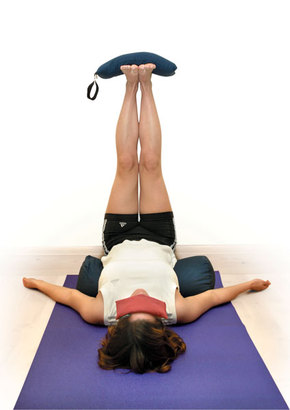
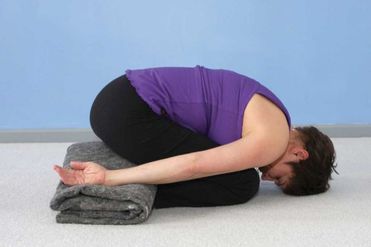
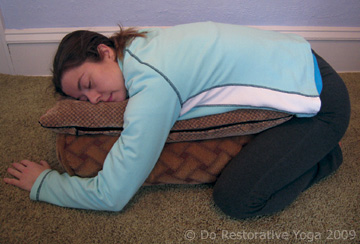
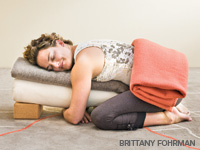
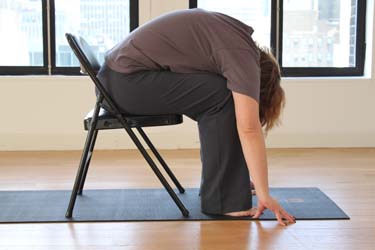
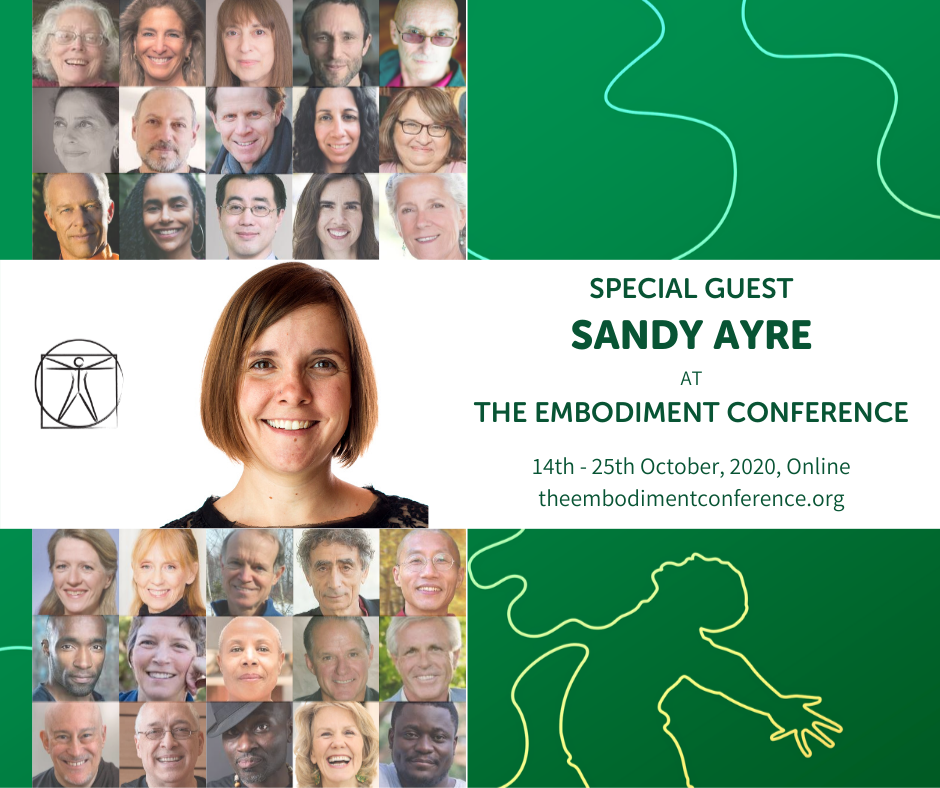
 RSS Feed
RSS Feed
